Introduction to Wind Energy
Wind energy is a type of renewable energy harnessed from the natural movement of the wind. It is a clean and sustainable form of power generation that utilizes the kinetic energy of the wind and converts it into mechanical power or electricity.
The concept of using wind for energy dates back to ancient times when people utilized wind for tasks like sailing boats or grinding grain using windmills. In the late 19th century, builders constructed the first electricity-generating wind turbine. However, wind energy didn’t start to significantly contribute to electricity generation until the late 20th century, spurred by technological advancements.
The Science of Wind Energy
The science of wind energy revolves around the principle of converting kinetic energy (the energy of motion) into mechanical energy or electricity.
Wind is caused by the uneven heating of the Earth’s surface by the sun. This process causes air to move from high-pressure areas to low-pressure areas, resulting in wind. Wind turbines are designed to capture this kinetic energy.
A wind turbine works by using its blades to catch the wind’s kinetic energy. When the wind blows, it pushes against the blades of the wind turbine, causing them to turn. This movement then spins a shaft connected to a gearbox, which increases the speed of rotation. This rotation drives a generator that converts the mechanical energy into electrical energy, which can then be fed into the electrical grid.
Wind speed and direction can significantly affect the amount of electricity a wind turbine can generate. Higher wind speeds generally mean more electricity can be produced. Wind turbines are usually placed in areas where the wind is strong and consistent for this reason.
There are also various types of wind turbines, including horizontal-axis and vertical-axis turbines, and each has its own advantages and disadvantages. Factors like turbine size, blade design, and generator capacity can all affect the amount of energy a wind turbine can produce.
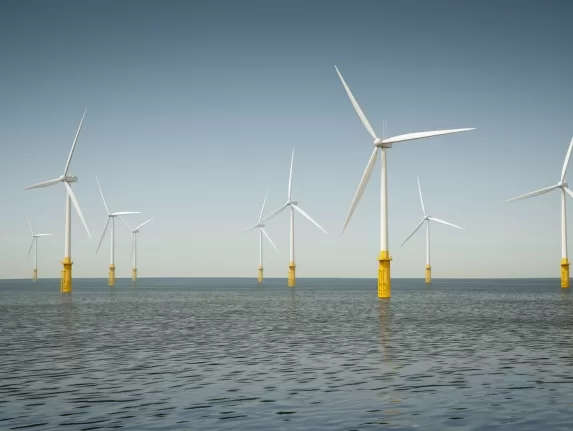
Types of Wind Energy Systems
Onshore Wind Energy:
Onshore wind energy systems are those that are installed on land. These systems can range from a single small turbine for individual use to large wind farms consisting of hundreds or even thousands of turbines. Onshore wind farms are typically found in areas with consistent wind, such as plains, hilltops, or coastal areas. They are the most common type of wind energy system due to their lower installation and maintenance costs compared to offshore systems.
Offshore Wind Energy:
Offshore wind energy systems are installed in bodies of water, typically in the ocean but sometimes also in lakes. This wind turbines tend to be larger than onshore turbines and can produce more power due to the higher wind speeds found over the water. They also have less visual and noise impact on humans as they are located far from populated areas. However, offshore wind farms are more expensive to install and maintain than onshore systems. They also face unique challenges such as the corrosive effects of saltwater and the need for underwater cabling to transmit the electricity to the grid.
Domestic Wind Energy:
Domestic wind energy systems power single homes or properties. Also known as residential or small wind systems, they use small wind turbines. They often combine with solar power or grid electricity. These systems are great for rural areas with strong winds and unreliable or costly grid power.
Community Wind Energy:
Community wind energy systems let local communities own and control projects. They can own wind turbines or a wind farm directly. Or, they can invest in a larger project through a cooperative model. These projects boost local economy by retaining more income locally. They also encourage local acceptance by giving community members a stake in the project’s success.
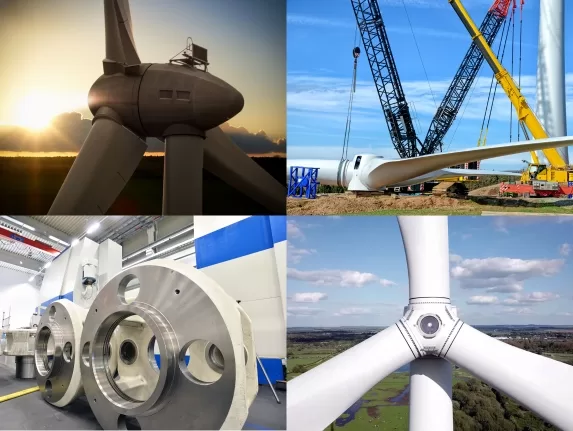
Components of Wind Energy Systems
Wind Turbines:
The wind turbine is the main component of a wind energy system. It is a device that converts the kinetic energy from the wind into mechanical energy. There are two main types of wind turbines: horizontal-axis wind turbines (the most common type, with blades that rotate around a horizontal axis, like a windmill) and vertical-axis wind turbines (with blades that rotate around a vertical axis).
Rotor Blades:
The rotor blades are one of the most visible components of a wind turbine. They are the parts that capture the wind’s kinetic energy and start the conversion process. When the wind blows, it pushes against the aerodynamic surfaces of the blades, which causes them to lift and rotate. The blades are attached to a rotor hub, and their rotation turns the main shaft of the turbine. The design and material of the blades can significantly impact the efficiency of energy capture and conversion.
Gearboxes:
A gearbox is an important part of a traditional horizontal-axis wind turbine. The gearbox connects the low-speed shaft (turned by the rotor blades) to the high-speed shaft. It increases the rotational speeds from about 30-60 rotations per minute (rpm) to about 1000-1800 rpm, which is the rotational speed required by most generators to produce electricity. However, some modern wind turbines use direct-drive generators that operate at lower rotational speeds, eliminating the need for a gearbox.
Generators:
The generator in a wind turbine turns mechanical energy into electrical energy. It uses electromagnetic induction, creating electricity as the rotor moves magnets around a conductor. This electricity then passes through a transformer to adjust the voltage for the grid. It then powers homes, businesses, and more.
A wind energy system has many parts. These include the supporting tower and the nacelle, which houses the gearbox, generator, and more. An anemometer and wind vane measure wind speed and direction. Control systems manage the turbine’s orientation and operation based on wind conditions.
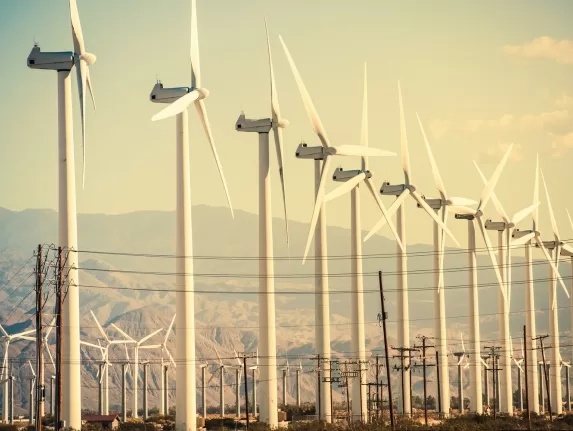
Wind Energy Conversion Process
The wind energy conversion process involves two main stages: the capture and conversion of energy into electricity and the integration of this electricity into the power grid.
Capture and Conversion of Wind Energy:
Wind turbines capture the kinetic energy of the wind and convert it into electrical energy. This begins with the wind pushing against the rotor blades of the turbine, causing them to lift and rotate. The blades are attached to a rotor hub, which is connected to a low-speed shaft. As the rotor spins, the shaft turns as well.
In most turbines, the low-speed shaft is connected to a gearbox that increases the rotational speed. The high-speed shaft coming out of the gearbox then turns the generator. As the generator spins, the motion of the rotor turns a set of magnets around a conductor, inducing a flow of electrons, or electricity.
This electricity is usually produced at a lower voltage, so it needs to be stepped up to a higher voltage before it can be transmitted. This is done using a transformer.
Power Grid Integration:
After voltage adjustment, the electricity integrates into the power grid. It then reaches end-users via transmission and distribution lines.
The power grid connects electricity producers to consumers. It includes power generating stations, transmission lines carrying power to demand centers, and distribution lines for individual customers.
Wind energy varies as wind speed affects electricity generation. So, grid operators use diverse energy sources, storage options, and demand management for stable supply.
This entire process, from capturing wind’s kinetic energy to delivering electricity, is the wind energy conversion process. It’s a sustainable method, producing no greenhouse gases during operation and using a renewable resource, wind.
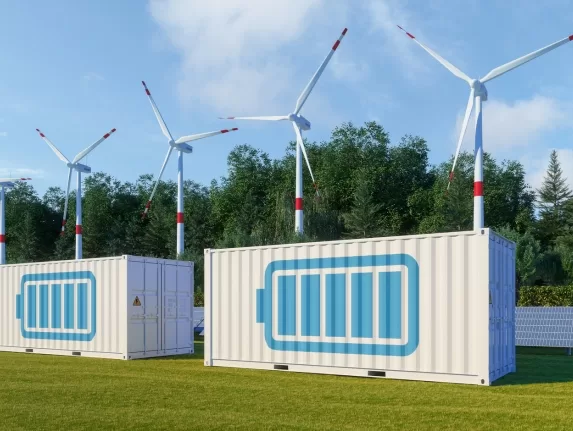
Wind Energy Technology Developments
Advancements in Wind Turbine Technology:
Over the years, there have been numerous advancements in wind turbine technology that have led to more efficient and cost-effective wind energy production.
- Larger Turbines: One of the most significant advancements has been the increase in turbine size. Larger turbines can harness more wind, which translates into more power. They also reach higher altitudes where wind speeds are typically faster and more consistent. Turbines had reached heights over 100 meters with rotor diameters exceeding 150 meters.
- Improved Design: There have also been improvements in turbine and blade design, resulting in more efficient energy capture and conversion. Aerodynamic optimization of the blades, improved materials, and advanced control systems have all contributed to these efficiency gains.
- Direct-Drive Generators: Traditional wind turbines use a gearbox to increase the rotational speed of the generator, but this can be a source of significant maintenance and reliability issues. Direct-drive generators, which eliminate the need for a gearbox, have become more common in wind turbine designs.
- Digitalization and Predictive Maintenance: The use of digital technologies in wind energy has significantly increased, enabling remote monitoring and control of wind turbines and predictive maintenance, which can reduce downtime and extend the life of the turbine.
Emerging Wind Energy Technologies:
In addition to advancements in existing technology, several emerging technologies hold promise for the future of wind energy.
- Floating Offshore Wind Turbines: While most offshore wind turbines are fixed to the seabed, floating turbines can be used in deeper waters where winds are stronger and more consistent. This technology could significantly expand the potential for offshore wind energy.
- Airborne Wind Energy Systems: These systems aim to harness the more consistent and stronger wind at higher altitudes by using tethered drones or kites. While still in the early stages of development, they could potentially offer another way to generate wind power in the future.
- Energy Storage: Integrating energy storage, such as batteries, with wind energy systems can help manage the variable nature of wind power and provide a more consistent power supply. Advancements in energy storage technologies are likely to play an important role in the future of wind energy.
- Grid Integration Technologies: New technologies and strategies are being developed to better integrate wind power into the grid and manage its variability, including advanced forecasting methods, grid management tools, and demand response strategies.
These advancements and emerging technologies have the potential to make wind energy an even more substantial part of the global energy mix in the future.
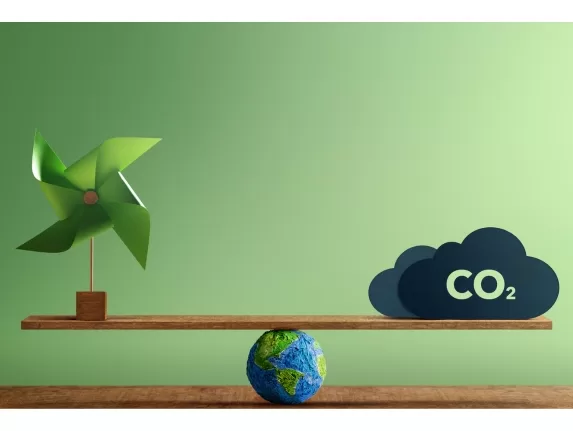
Environmental Impact of Wind Energy
Impact on Wildlife and Habitats:
While wind energy is a renewable and clean source of power, it can have impacts on wildlife and their habitats. Birds and bats, in particular, can be affected if they collide with wind turbine blades. Some studies also suggest that the noise and vibration from turbines can disrupt wildlife behavior. However, proper site selection and monitoring can significantly minimize these impacts. Wind farms are usually situated away from major migratory pathways and sensitive habitats to reduce the risk to wildlife. There are also ongoing efforts to develop technologies and strategies, such as radar detection systems and operational adjustments during critical periods, to further reduce the impact on birds and bats.
Noise and Visual Impact:
Wind turbines can create noise and visual impacts. The noise comes from the mechanical operation of the turbine and the aerodynamic noise from the blades. While the noise is generally not a problem at the typical distances between turbines and homes or offices, it can be an issue in some situations. Visual impacts can also be a concern for some people who find wind turbines unsightly. The degree of visual impact often depends on the landscape and the number of turbines. Planners try to minimize these impacts by carefully choosing wind farm locations and designs.
Carbon Emissions Savings:
Wind energy is beneficial because it generates electricity without greenhouse gases when turbines operate. So, it can save significant carbon emissions over a wind farm’s lifecycle, compared to fossil fuel power. The exact savings vary depending on the wind farm size, wind resource, and grid’s energy mix. Usually, the carbon emissions from making, installing, and maintaining wind turbines balance out within months to a year of operation.
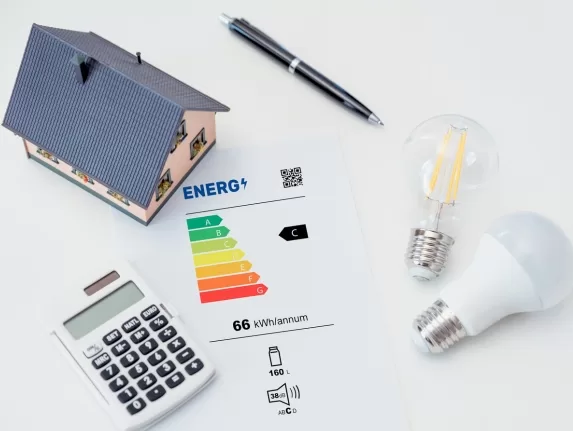
Economic Aspects of Wind Energy
Costs and Economics of Wind Energy:
In the past decade, wind energy costs have significantly dropped. It’s now among the most affordable electricity forms globally. Technological advances, larger manufacturing scale, and operational experience helped lower the cost. Wind energy costs include capital costs like turbines, installation, and infrastructure, as well as maintenance and financing costs. Notably, wind energy lacks fuel costs and has low lifecycle greenhouse gas emissions. This makes it competitive with traditional energy sources when considering total energy costs.
Job Creation and Economic Growth:
The wind energy industry is a significant job creator. Jobs are created in various areas, including manufacturing, installation, operation and maintenance, and services. In addition to direct job creation, the wind industry also generates indirect jobs in related industries and induced jobs from the spending of workers in the industry. The development of wind energy projects can also bring economic growth to rural areas, as these projects often pay taxes or other payments to local governments and lease payments to landowners.
Market Trends in Wind Energy:
The wind energy market has been growing rapidly in recent years. This growth has been driven by declining costs, improved technology, policy support, and increased concern about climate change. While growth has been strong in established markets like Europe, North America, and China, there is also growing interest in wind energy in many emerging markets around the world. Looking forward, the outlook for the wind industry is generally positive, with ongoing technology improvements, growing demand for clean energy, and continued policy support expected to drive further growth.
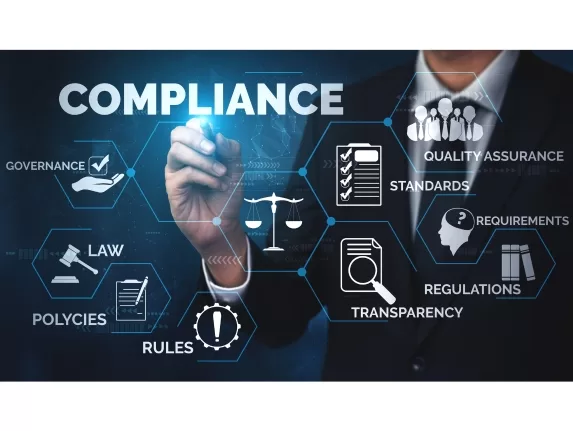
Policies and Regulations for Wind Energy
Global and Local Policies:
Wind energy development worldwide is significantly influenced by a variety of policies at international, national, and local levels.
- At the global level, international agreements such as the Paris Agreement have set ambitious targets for reducing greenhouse gas emissions, encouraging countries to invest in renewable energy technologies like wind power.
- At the national level, governments can support wind energy through a variety of policy mechanisms, such as renewable portfolio standards (requirements for utilities to obtain a certain percentage of their power from renewable sources), feed-in tariffs (guaranteed payments for renewable energy producers), tax credits, and direct subsidies or grants. Many countries also have specific national targets for renewable or wind energy development.
- At the local level, policies can influence where and how wind energy projects are developed. This can include zoning laws, permitting requirements, and local incentives for renewable energy. Local policies can also influence public acceptance of wind energy projects, which can be a significant factor in their success.
Regulatory Challenges and Solutions:
Despite the policy support for wind energy, there are also regulatory challenges. These can include complex permitting processes, inconsistent or uncertain policy environments, grid access issues, and social acceptance challenges.
- One solution to these challenges is to streamline and standardize permitting processes while ensuring adequate environmental and community protections. This can make it easier for wind projects to get off the ground and reduce development costs.
- Policy consistency and certainty are also important. When policies change frequently or are uncertain, it can create risk for investors and developers, potentially slowing down wind energy development. Long-term policy commitments can help provide this certainty.
- Integrating wind energy into the power grid can also be a challenge, particularly when it comes to managing the variability of wind power and ensuring grid stability. Regulatory solutions here can include grid modernization efforts, the development of energy storage technologies, and the use of advanced grid management practices.
- Finally, addressing social acceptance challenges can require a combination of public engagement, community benefits agreements, and efforts to minimize the impacts of wind projects on local communities and environments.
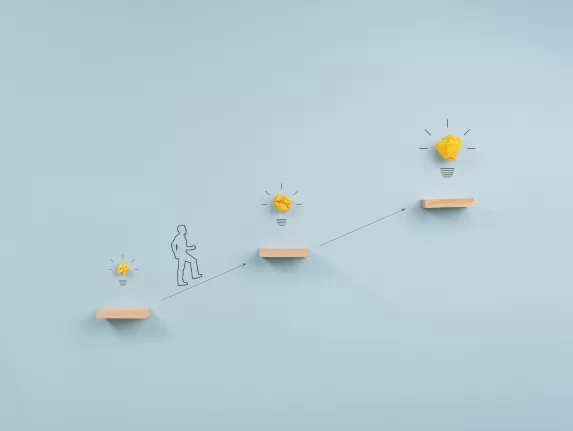
Challenges and Future of Wind Energy
1. Technical Challenges:
Despite significant advancements, the wind energy sector faces a few technical challenges.
- Intermittency: Wind is an intermittent source of energy, meaning it’s not always available when demand is high. Balancing the supply and demand of electricity on the grid can be a challenge. Energy storage technologies like batteries can help address this issue, but there’s ongoing need for advancement in this area.
- Grid Integration: The infrastructure of many power grids, particularly older ones, wasn’t designed to handle a high percentage of variable renewable energy. Modernizing these grids and developing technologies to manage the variability of wind power, such as smart grids and demand response technologies, is an ongoing challenge.
- Turbine Technology: Further advances in wind turbine technology are needed to reduce costs, improve efficiency, and enable operation in a wider range of conditions. This includes the development of turbines that can harness lower-speed winds and those that can function effectively in deep-water offshore environments.
2. Opportunities for Growth:
Despite these challenges, there are numerous opportunities for the growth of the wind energy sector.
- Offshore Wind: Offshore wind represents a significant opportunity. Winds are typically stronger and more consistent offshore than on land, and in many countries, offshore areas are close to major population centers where electricity demand is high.
- Emerging Markets: There’s considerable potential for growth in emerging markets, particularly in regions with high wind resources and growing energy demand, such as in parts of Africa, Asia, and South America.
- Technological Innovation: Ongoing innovation in areas such as turbine technology, energy storage, and grid management offers significant growth opportunities for the wind sector.
3. Future Outlook:
The wind energy sector looks towards a bright future. As climate change propels the demand for clean, renewable energy, advancements in technology, cost reductions, and supportive policies place wind energy in a strong position to fulfill a significant portion of this need. This growth trajectory also signifies opportunities for creating jobs and stimulating economic development.
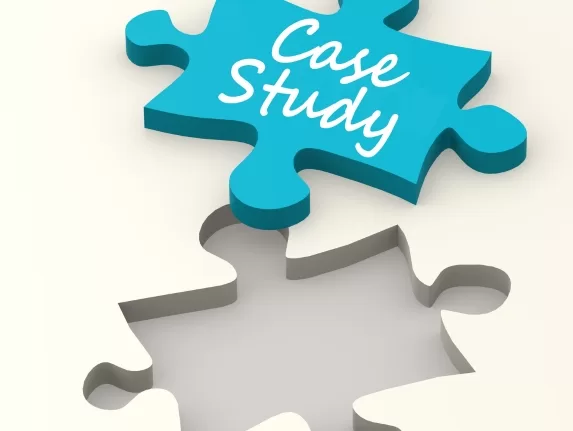
Case Studies
Successful Wind Energy Projects:
- Horns Rev Offshore Wind Farm, Denmark: This wind farm is one of the largest offshore wind farms in the world. It began operation in 2002 and consists of 80 turbines, each with a capacity of 2 MW, totaling 160 MW. Denmark’s commitment to renewable energy, along with technological innovations, strong policy support, and effective public-private partnerships, have contributed to the success of this project. The project also emphasized minimizing environmental impacts and engaging with stakeholders.
- Jiuquan Wind Power Base, China: This is one of the largest onshore wind farms globally, with a planned capacity of 20 GW. The wind farm, located in the Gansu province, is a testament to China’s significant investment in wind energy. The successful development of this wind farm was driven by the country’s ambitious renewable energy goals, comprehensive planning, and government support.
Lessons Learned and Best Practices:
- Public Engagement and Transparency: Successful wind energy projects often involve robust public engagement and transparency. This can help address concerns, enhance public acceptance, and avoid potential conflicts. Involving local communities in the planning process and ensuring they benefit from the project (for example, through job creation, local investment, or community funds) can be key to success.
- Environmental Impact Assessment: Conducting thorough environmental impact assessments and implementing measures to minimize impacts on wildlife and local habitats are critical. Such practices have been used successfully in various projects to reduce potential impacts on birds, bats, and marine life.
- Long-term Policy Support: Long-term policy support and a stable regulatory environment are often key drivers of successful wind energy projects. This provides certainty for investors and can drive down costs by enabling economies of scale and technological innovation.
- Grid Integration: Successful projects often involve careful planning for grid integration, including infrastructure upgrades and the use of advanced grid management practices. This can help manage the variability of wind power and ensure a reliable power supply.
These case studies and lessons learned provide valuable insights for the development of future wind energy projects. By incorporating best practices and learning from past successes and challenges, it’s possible to continue advancing wind energy as a sustainable, reliable, and cost-effective power source.